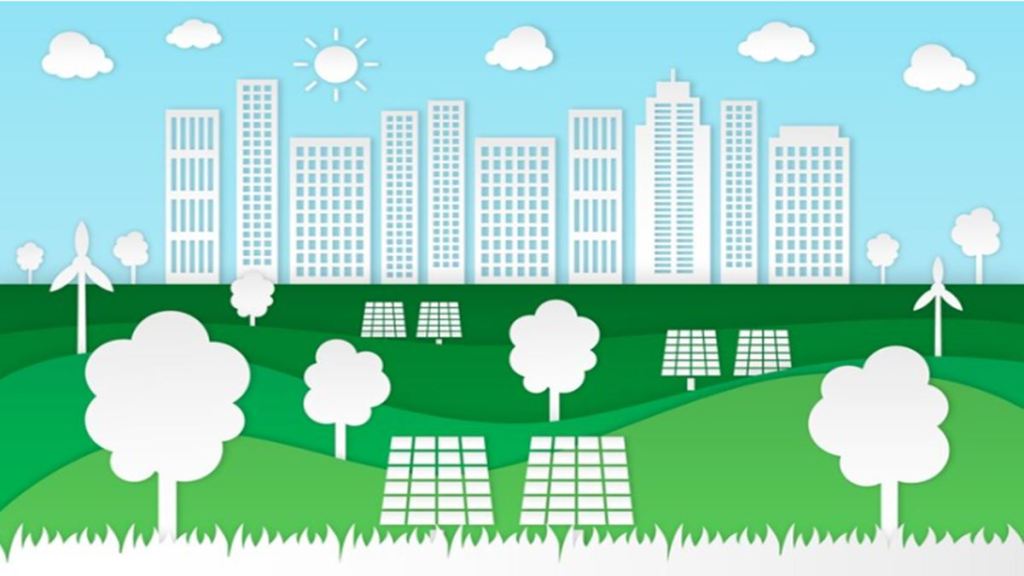By Anirban Ghosh and Surekha Tetali
India has experienced an unprecedented heatwave this year. Last Sunday, temperatures exceeded 45 degrees Celsius in at least 37 cities, with Sirsa in Haryana, Churu and Phalodi in Rajasthan, and Nagpur in Maharashtra crossing 50°C. Reports indicate that around 25,000 people have suffered heat strokes this year, heat related deaths have crossed 50, and the Rajasthan High Court has appealed to the Centre to declare heatwaves as a national calamity.It is well known that the heatwaves are being caused by excessive greenhouse gas emissions, leading to a steady rise in temperatures. Despite nations signing the Paris Agreement and increasing their climate action ambition at Glasgow, the world’s emissions trajectory continues to proceed in the wrong direction.
Armed conflicts in Palestine and Ukraine are making the situation worse. Though the clamour for decarbonisation and emission reduction continues in the shadow of these conflicts, we must prepare to live in harsher conditions where heatwaves are more frequent, widespread, and longer than before. To live comfortably, adapting to this dystopian situation is as important as trying to mitigate it.One way to adapt to worsening ambient heat conditions is by reducing the impact of external heat on the roof of a building since it is the surface most exposed to solar radiation. Prior research shows that conventional grey roofs can be 31-47°C hotter compared to the surrounding air temperature, while cool roofs tend to stay between 6 and 11°C higher than the air temperature. We counteract heat ingress by air-conditioning (ACs) internal spaces and this requires energy. As much as 50% of Indian households are expected to have ACs by 2037, up from 10% now. This will mean far greater energy consumption, more emissions, and more atmospheric heating. Creating cool roofs by increasing the reflection of heat from the roof surface will help reduce the internal temperature of a building (adaptation) and also provide knock-on emission mitigation benefits by reducing the need for cooling.
Traditionally, whitewashing roofs using lime and chalk has been a common practice to reduce heat gain from them, but there are a number of other ways in which roofs can be kept cool as well. The National Disaster Management Authority has published a comprehensive House Owners’ Guide to Alternate Roof Cooling Solutions that lists 16 roof cooling technologies including heat insulation tiles, modified bitumen membrane, and gravel roof. The publication is an acknowledgment of the critical need for cool roofing as an adaptation solution and has very useful information.The usage of cool roofing solutions has increased after its mention in the Energy Conservation Building Code and incorporation in rating systems such as the Indian Green Building Council and Green Rating for Integrated Habitat Assessment. Learning from international best practices such as the cool roof programmes in New York, Toronto, and Los Angeles, India’s first cool roof policy was launched in Telangana in 2023, and is applicable for five years. According to this policy, cool roofs are mandated for all non-residential government and government-owned buildings, and for residential buildings with plot area of 600 square yards or more.Three metrics are used to measure the effectiveness of a cool roofing solution.
The solar reflectance index (SRI) quantifies how hot a surface can get relative to a black surface. SRI for a standard black surface is 0 and a complete white surface is 100. Reflectance is the ability of the surface to reflect light (black surface = 0.05; white surface = 0.8) and emittance is the ability of the surface to reflect heat (black surface and white surface = 0.9). A cool roof, as recommended by the Energy Conservation Building Code of India, should have solar reflectance value of at least 0.6 and thermal emittance of at least 0.9.In recent times, the use of cool roofing paints has gained traction because of their effectiveness and ease of use. Many locations, including the new Parliament building, have used cool roofing paints, and these can be regarded as extensive proofs of concept. A test report of the National Mineral Development Corporation, Hyderabad, shows that the use of a cool roofing paint developed by the Indian Institute of Technology Bombay, with reflectance around 0.87 and emittance of more than 0.9 (Thermacool), led to roof surface temperature drop of 11 to 14°C and ambient temperature drop of 4.8°C.A field experiment conducted in a composite climate (Hyderabad) showed the benefits of a painted cool roof compared to a black roof.
Statistical analysis of the measured data showed that energy savings due to roof whitening ranged between 20 and 22 kilowatt hours per square metre of roof area corresponding to air-conditioning energy use reduction of 14-26%. Further analysis of environmental impact showed that the annual direct carbon dioxide reduction associated with this reduced energy use would be 11-12 kg per square metre of roof area. Besides, cool roofs abate the phenomenon of urban heat island — the increased urban temperatures compared to rural surroundings.The benefits of cool roofing solutions such as increased thermal comfort, reduced energy consumption, lower greenhouse gas emissions, and cuts in energy costs are now proven. Recent experiments suggest cool roofing solutions could have spin-offs like increasing the efficiency of solar panels on roofs and reducing wear and tear of construction material. Several studies have found that the benefits associated with cool roofs in buildings already outweigh the costs. With 60% of buildings required in India by the end of this decade yet to be built, skyrocketing air conditioner penetration, and a rooftop solar revolution only starting now, this is the right time to scale up cool roofing solutions and adapt to the steadily rising temperatures and debilitating heatwaves.
The authors are Head, Centre for Sustainability, Mahindra University and assistant professor, Centre for Sustainability, Mahindra University
Views are personal


